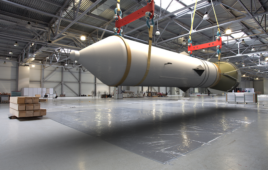A satellite built at MIT’s Lincoln Laboratory and abandoned in 1967 began transmitting again in 2013, an amateur radio operator found.
Vintage News reported via Southgate Amateur Radio News that Phil Williams, an amateur radio astronomer in the United Kingdom, picked up on the satellite’s signal in 2013, and confirmed that it was an LES-1, or Lincoln Experimental Satellite built to test how satellites could communicate from orbit.
Nine Lincoln Experimental Satellites were built at MIT’s Lincoln Laboratory between 1965 and 1976. Five of them successfully made it to their planned orbits, while three more, including LES1, missed the mark and only reached lower orbits. (LES7 was not successfully funded.)
LES1 launched on Feb. 11, 1965 from Cape Canaveral, Fla. Despite a boost stage failure leaving it stranded at 2,800 km, it was able to successfully transmit its results.
Williams noticed a “ghostly sound” in the satellite’s signal. He thinks that a component failure caused the satellite’s transmitter to start up again on 237MHz, although it can only do so as the solar panels come into the light. Because the satellite is tumbling completely over every 4 seconds, the signal fluctuates when the panels are shadowed by the satellite’s body.
Both LES1 and LES2 featured a single X-band transponder and an 8-horn electronically switched antenna, and were intended to demonstrate practical military satellite communications.
The Lincoln Laboratory satellites were built with sponsorship from the United States Air Force.
Filed Under: Aerospace + defense




